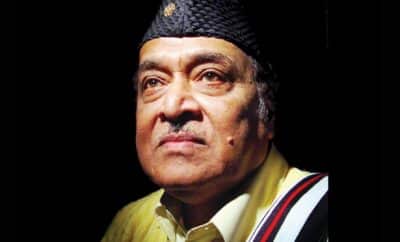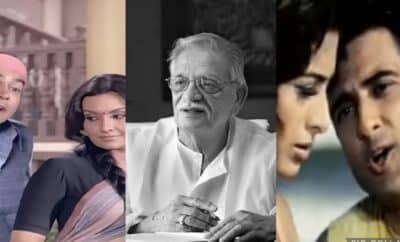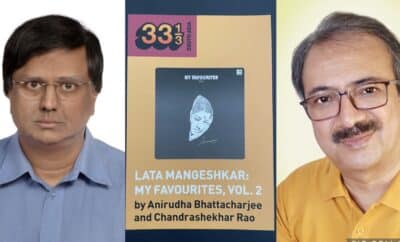Legends
Chhoti Si Kahani Se – Ijaazat – The Monsoon Blossom
As the summer season matures into unbearable fullness, the parched and exhausted earth anticipates the arrival of monsoon. And it takes just one good shower to change the mood and the season. It, as if, showers our spirit and soul. We fall in love with the rhythm of the rain. The Earth starts sending all the green vibes, hosting a beauty at every bend and corner.
As one of the Prem Dhawan songs says – Hariyala sawan dhol bajata aaya re…. The thundering, gushing of the winds, the lightening, falling of water, all announce arrival of the monsoon. Mountains are covered in green carpet. The valleys start gurgling with small streams. Dark clouds lean over and clothe huge mountains in their embrace. An emotional heart finds romance even in the puddles by the roadside. And all this gives way to the monsoon flowers, the monsoon blossoms. The green carpet bursts at places to show off tiny colourful beauties. These monsoon blossoms are extremely fragile and dainty. Even their fragrance is not very strong. They don’t advertise their presence. It is only when you go near them that you realise they have a gentle, compassionate fragrance. A fragrance which lingers on for hours. The quaint canvas makes our hearts full. Does the above description remind you of a picturesque song?
Parallel to what Gulzar writes –
छोटी सी कहानी से
बारिशों के पानी से
सारी वादी भर गई
ना जाने क्यों
दिल भर गया
ना जाने क्यों
आँख भर गई…..
A grandee of a song picturised beautifully by cinematographer Ashok Mehta, where Gulzar unfolds a saga of love, a saga which blends rain water with tears. This kahani just like the monsoon blossoms is dainty and fragile and unfurls petal by petal. Not just lyrically but musically too. The saga gives a feeling of crescendo with every line unfolding. The pattern of short phrases (lyrical and musical), which begin in the mukhda, continues in the antaras too.
शाख़ों पे पत्ते थे,
पत्तों पे बूँदें थीं,
बूँदों में पानी था,
पानी में आंसू थे…..
Gulzar uses only 3-4 words in each line throughout the song. And then he relies on Pancham (R D Burman) to complete the story with his music. Pancham comes out with a perfect complement of short music phrases which build a crescendo. He accentuates each antara with an extended Haaaaaaannn. Prelude begins with 12 strings guitar followed by Chinese bells played by Homi Mulan. The combination of keyboards used throughout the song is by Kersi Lord. Rhythm section has Tumbas, madal and reso reso. The music arrangement also has flutes – bamboo and alto switch – played by Ronu Majumdar and Manohari Singh respectively. But the highlight of this song is the bellowful accordion played by Suraj Sathe.
Though Gulzar and Pancham were like chalk and cheese, their musical rapport was unbeatable. Throwing the ball in each other’s court, they challenged each other and cherished it. Their music sensibilities matched seamlessly.
In their book – R D Burman – The Man, The Music, authors Anirudha Bhattacharjee and Balaji Vittal write – Gulzar relates another well-remembered anecdote – “I wanted to sit with Pancham while he was composing Chhoti si Kahani se as otherwise I would not have been able to picturize the sequence. But Pancham kept postponing it, saying, “I don’t know when I will sit down to compose”. Finally he called me to the recording studio, which is where I got to hear the song while it was being recorded in dual tracks. He said, “Here is your song. In 2 tracks. Now you can go and picturise it”.
And Gulzar picturised the song brilliantly. Matching the atmosphere Pancham had already created in the song. Those Western ghats look simply gorgeous. They’re ready to take you through this saga of Sudha-Mahender and Maya.
While the first stanza of the song creates an atmosphere for the saga to go further, it also hints that the saga is bitter – sweet. The second stanza is all about the movie in a gist.
दिल में गिले भी थे
पहले मिले भी थे
मिलके पराये थे
दो हमसाये थे…..
Sudha (Rekha) & Mahendar (Naseer) share a good equation during their married life. But each have their own grievances and have to sadly part ways. Pancham keeps the music simple as the song unfolds petal by petal. The short phrases add charm to the bitter – sweet saga. Asha’s voice just like the gurgling stream provides ample nourishment to this delicate monsoon blossom. Pancham fans would already know that the music, especially the accordion pieces, of this song runs parallel to his earlier song – Ae mere bete sun mera kehna from Aa Gale Lag Jaa (1973).
रुकती है थमती है
कभी बरसती है’
बादल पे पाँव रख के,
बारिश मचलती है…..
Just as in the picturisation of the song, the short music phrases too, peak and valley and culminate into an earnest “Haaaaan“. As the song ends, we see a train coming to a halt and it is perfectly denoted with a cantering accordion piece. It gives you the feel of something halting gradually and not abruptly. Pancham had done something similar almost 20 years back. 1968 to be precise. Check out the scene from Padosan where Sunil Dutt comes on a horse cart, to stay with his Mami. Hear something similar as the cart comes to a halt?
Ijazat (1987) is based on the Bengali novel Jatugriha by Subodh Ghosh. The novel was also adapted in the Bangla language in 1964 by the same name, starring Uttam Kumar.
Ijazat might be the only film where 2 songs are recorded on two-track creating a beautiful vocal harmony or the echo effect, considering the 2 track recording of Qatra qatra milti hai…
With the arrival of monsoon, the month of June has plenty of monsoon blossoms. Pancham, born in the month of June, is a monsoon blossom too. And he too seldom advertised his presence. It is only when you come across his music you feel his presence. Just like the fragrance of the monsoon blossoms – gentle, compassionate and everlasting.




free temporary email
April 4, 2025 at 4:24 pm
Excellent blog here Also your website loads up very fast What web host are you using Can I get your affiliate link to your host I wish my web site loaded up as quickly as yours lol